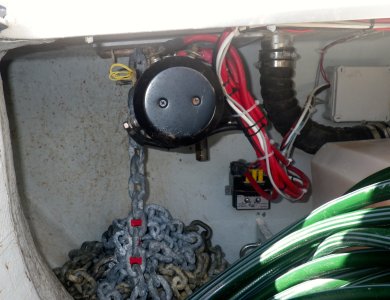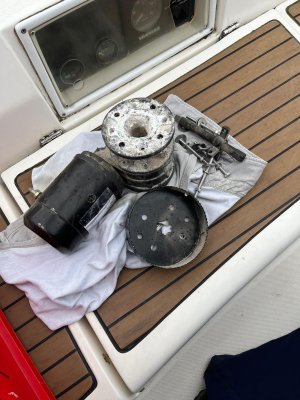Neeves
Well-Known Member
Its easy to determine if its salt - taste it. I'd be surprised if the OP has not already done this. If its salt I'd question why there seems to be a concentration at that flange or base plate. If its corrosion it will be insoluble.
If its corrosion there is an awful lot of it and if its salt then the locker needs a good wash with fresh water. Having said that the locker looks clean, the textile rode looks almost unused. Another thought - white rust (google 'white rust') from a new but damp chain rode - though quite how it has smothered the windlass I cannot even guess.
If its white rust then the chain needs a good wash with fresh water (the chain locker should enjoy the same frequency of washing with fresh water as the deck) and the chain and rope need to be kept separate.
That's white rust between the 2 red chain markers

Jonathan
If its corrosion there is an awful lot of it and if its salt then the locker needs a good wash with fresh water. Having said that the locker looks clean, the textile rode looks almost unused. Another thought - white rust (google 'white rust') from a new but damp chain rode - though quite how it has smothered the windlass I cannot even guess.
If its white rust then the chain needs a good wash with fresh water (the chain locker should enjoy the same frequency of washing with fresh water as the deck) and the chain and rope need to be kept separate.
That's white rust between the 2 red chain markers

Jonathan

